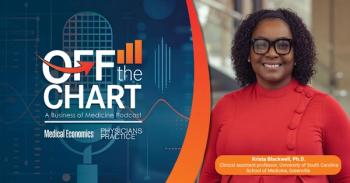
To really make AI useful, health systems should rethink how they use data, researchers say
Key Takeaways
- Learning health systems enable real-time data analysis, improving care delivery and outcomes by facilitating rapid adoption of best practices.
- Transitioning to learning health systems requires investment in technology, training, and cultural change, but offers strategic advantages.
A new perspective piece calls on health systems to stop hoarding data and start using it to improve care.
Despite widespread use of
“Practitioners will be able to more easily and quickly see what’s working and what’s not; and what’s driving up unnecessary costs,” said Peter Steel, M.D., lead author and associate professor of clinical emergency medicine at Weill Cornell Medicine.
The paper, co-authored by researchers at UC San Diego and
What is a learning health system?
In a learning health system, data from routine care is continuously collected, analyzed and used to guide changes in care delivery. Instead of waiting years for randomized controlled trials or new guidelines, health systems can iterate in near real time. This model allows for faster adoption of best practices, more responsive care pathways and improved outcomes.
But progress has been slow. EHRs were originally designed for documentation and billing, not for dynamic learning. That’s a problem as AI enters the picture.
“AI can only fulfill its promise if it’s built on a foundation of learning infrastructure,” Steel said.
Primary care can’t afford to be left out
For primary care physicians — especially those in academic or value-based settings — this approach could bring long-overdue support. AI tools for care gap detection, risk stratification and preventive planning all rely on structured, high-quality data. A learning health system provides the foundation for those tools to actually work in practice.
Beyond that, better infrastructure could mean less time spent on manual quality reporting or fighting with fragmented systems. Practices would benefit from real-time feedback, integrated care insights and faster evidence adoption.
And in an increasingly competitive landscape, primary care departments that help lead this shift may gain more leverage within larger health systems.
The price tag — and the payoff
Implementing a true learning health system requires investment — in technology, training and cultural change. But the authors argue that those investments are strategic, not optional. Delaying could mean falling behind in clinical innovation, funding opportunities and operational efficiency.
Institutions like UC San Diego Health, Penn Medicine and Stanford are cited as early adopters of LHS models, using integrated informatics and quality improvement pipelines to drive transformation.
Rewriting medical training
The perspective also calls for education reform. Medical students and residents still graduate with little training in data science, systems improvement, or AI fluency. The authors argue that these skills must become core competencies — not electives — if the health system is to evolve.
Programs such as the AHRQ-PCORI Learning Health System Centers of Excellence and Cornell Tech’s health tech curriculum are starting to fill that gap. Clinicians who understand both medicine and informatics will be essential to bridging care and continuous improvement.
A clear directive
“Implementing the learning health system is no longer a theoretical goal, but a strategic imperative,” Steel said.
In other words: if AI is the tool, the learning health system is the engine. For primary care leaders and practice managers, the message is clear — systems that learn will outperform those that don’t. And practices that embrace this model today may shape the future of medicine tomorrow.
Newsletter
Stay informed and empowered with Medical Economics enewsletter, delivering expert insights, financial strategies, practice management tips and technology trends — tailored for today’s physicians.
















